
4-Xtremes – Part 71: Premier seat at the "end of the world"
Series: 4-Xtremes – The World Tour
Andrea and Mike reach the south of Tierra del Fuego: the "end of the world". The journey there is long – and has it all. From surprisingly small boats and furry pests, from border crossings and a sudden onset of winter.
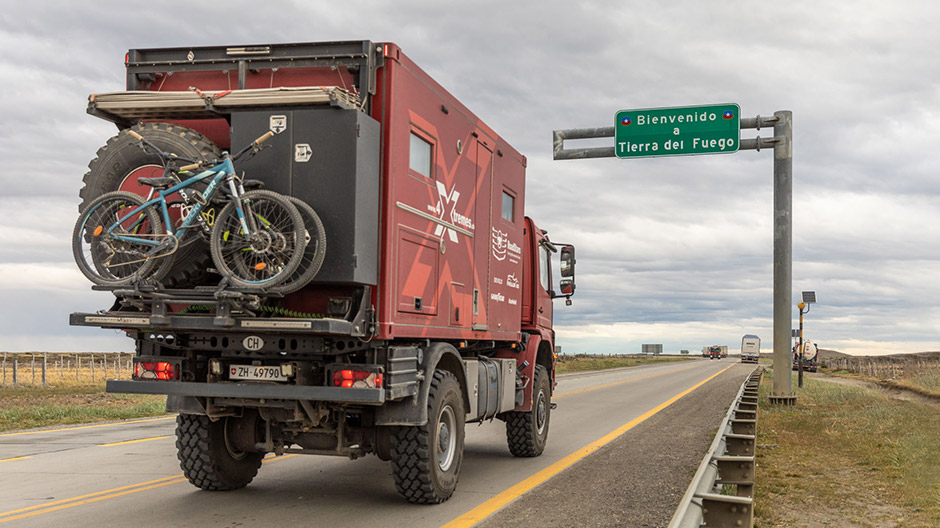
Welcome to Tierra del Fuego! The name of South America’s southern tip goes back to seafarer Fernando Magellan – he claimed to have seen countless fires here, lit by the indigenous inhabitants of the region.
Ushuaia is located in the south of Isla Grande de Tierra del Fuego – literally the big island of Land of Fire. The city is something of a place of pilgrimage for travellers. No wonder, it is considered to be at the "end of the world". It's a must for anyone who somehow has the opportunity to go there. Today we can announce: the Axor and we have reached this major milestone of our "4‑Xtremes – The World Tour".
The trip here – and that's what the "end of the world" is all about – was long. Even the last section that we are taking you on today, stretched over around 1,000 kilometres. It started in the coastal town of Puerto San Julian in Argentina’s Santa Cruz province. By the one‑to‑one replica of the "Victoria". And with this feeling of amazement at how small the ship was that first circumnavigated the world. In 1519, five ships, all between 20 and 30 metres long and 6 to 10 metres wide, set sail under the command of the Portuguese navigator Fernão de Magalhγes – Ferdinand Magellan. On board: a crew of 237. Almost three years later, only the "Victoria" with its 18‑strong crew returned to its home port.
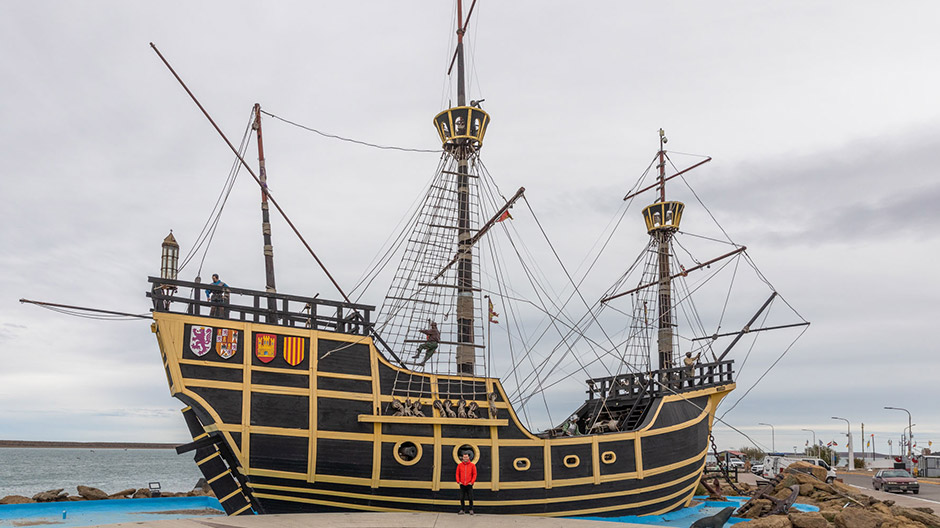
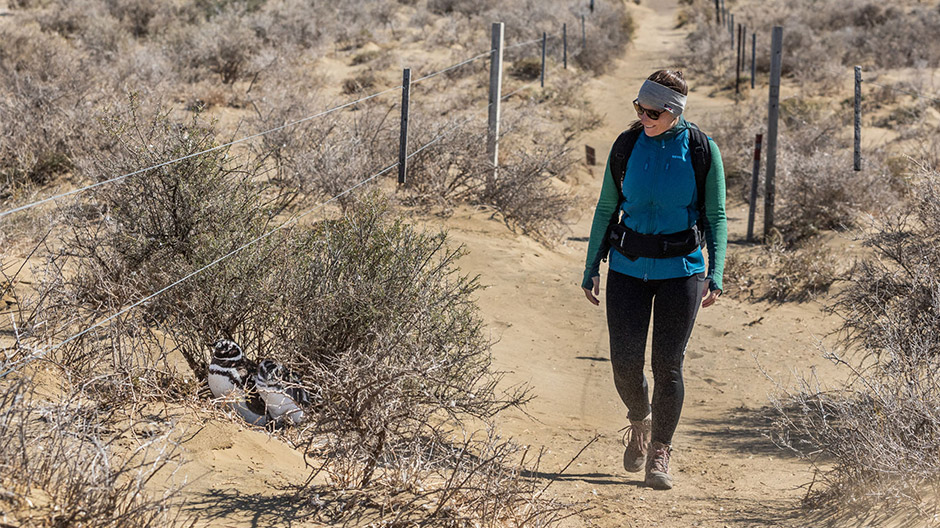
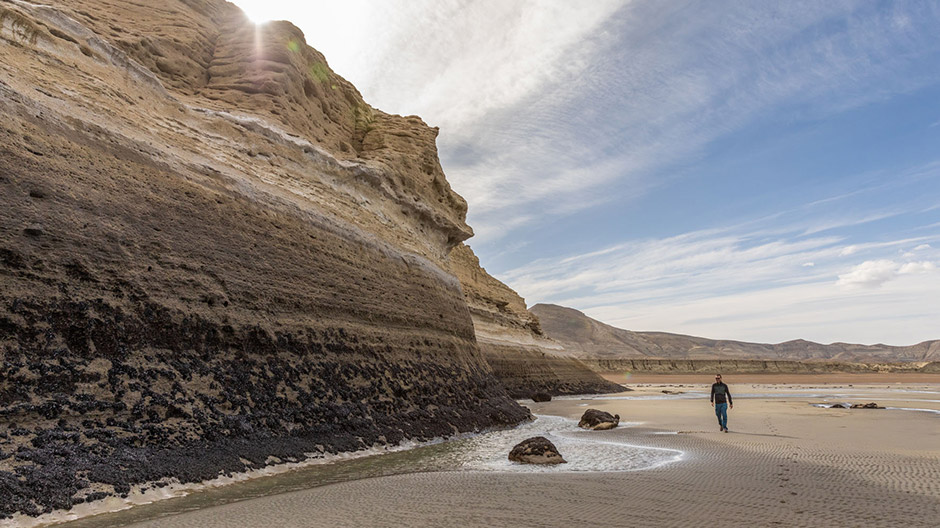
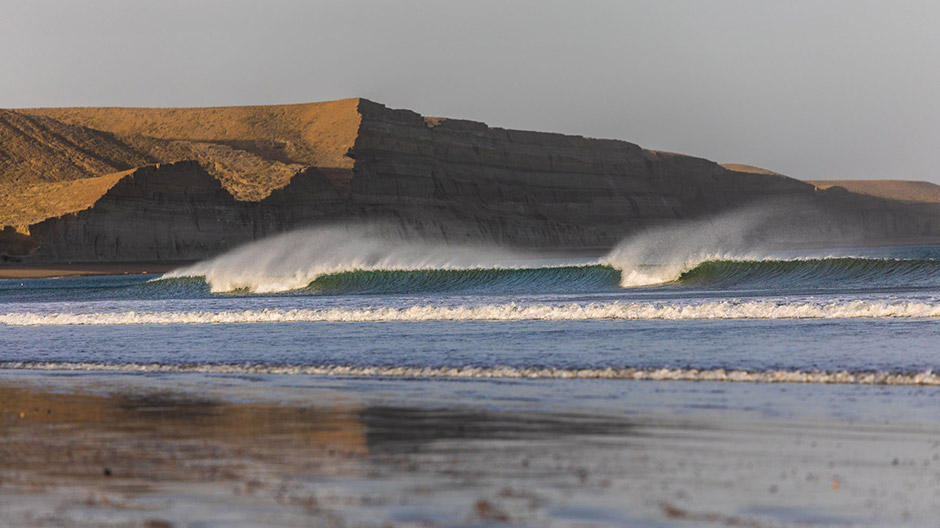
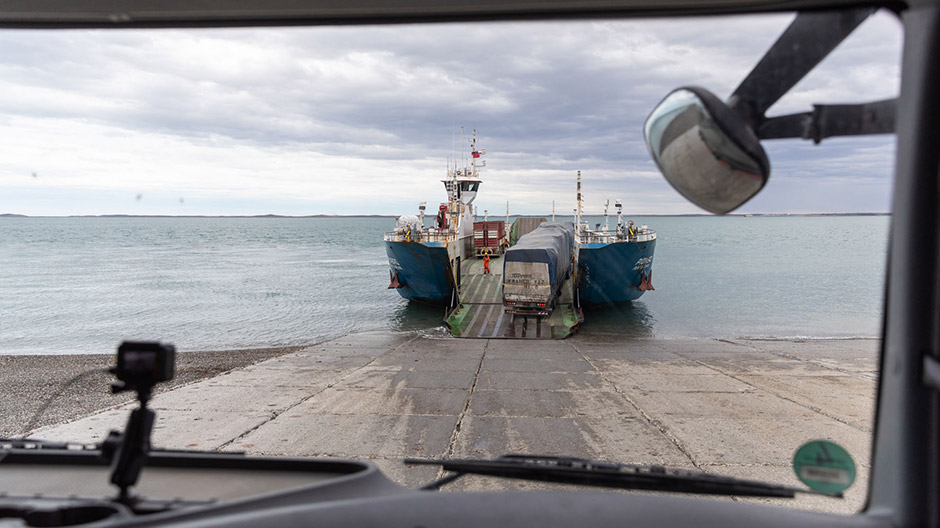
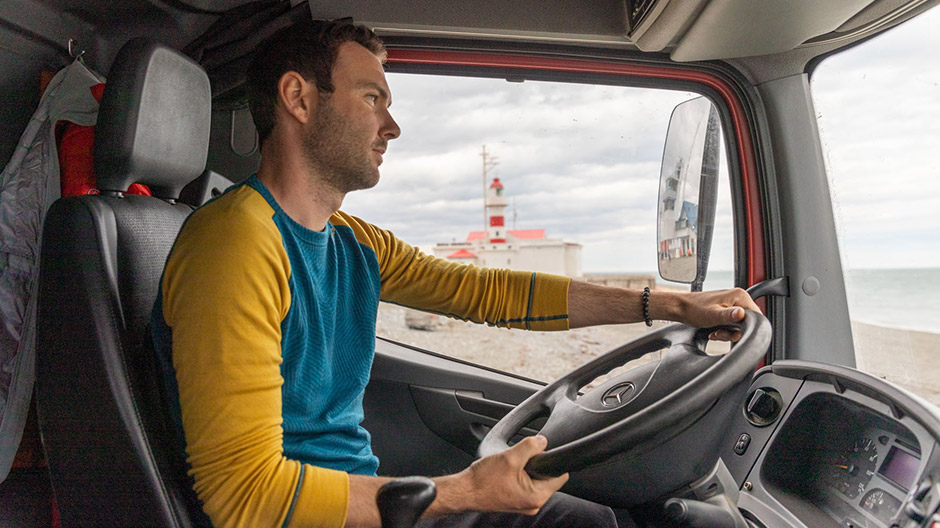
From Argentina to Chile and back.
The next destination was Monte León National Park, also in the province of Santa Cruz, and also located on the coast. As is the case further north, this is the habitat of plenty of Magellanic penguins and sea lions. However, we are even more fascinated by the enormous difference between low and high tide: a whopping nine metres! We took some pictures on the beach at low tide.
After around 420 kilometres, Ruta 3 turned into Ruta 255 because we crossed the border to Chile. A border that is easy to overcome. However, we had to adjust our food supplies quite a bit in the days before. Chile prohibits the import of fresh foods such as fruit, vegetables, meat and dairy products. Upon crossing the border, all we had on board was rice, pasta and tinned vegetables.
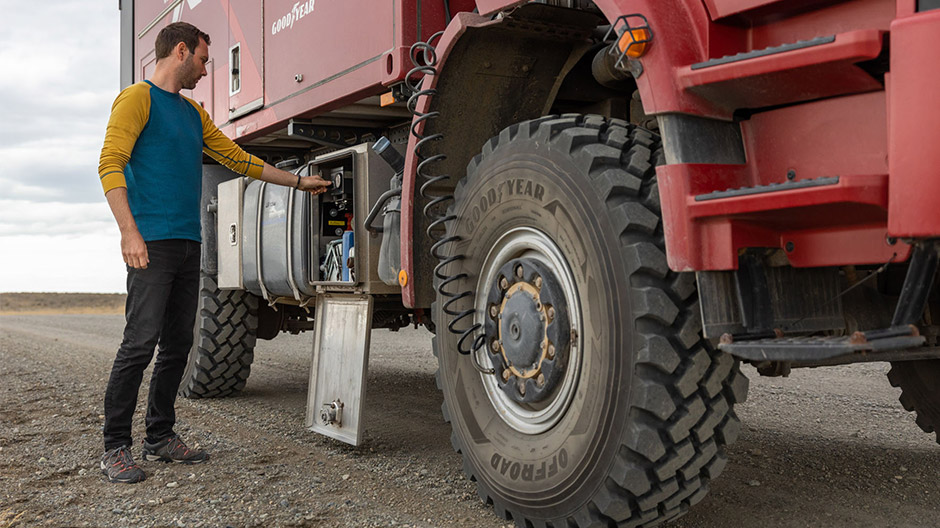
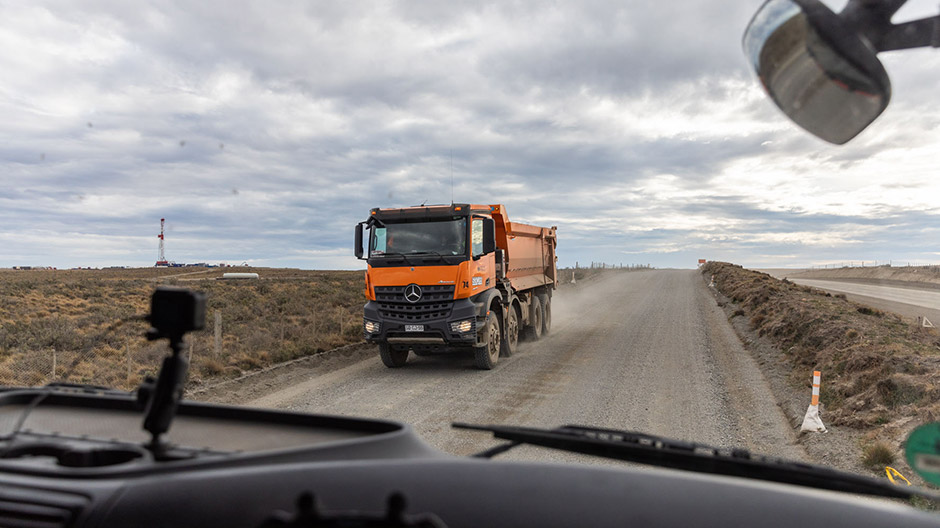
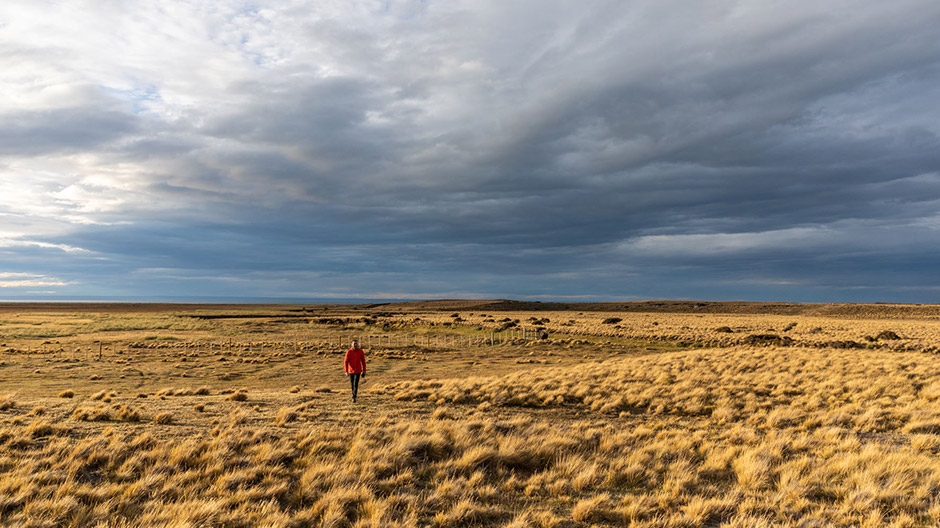
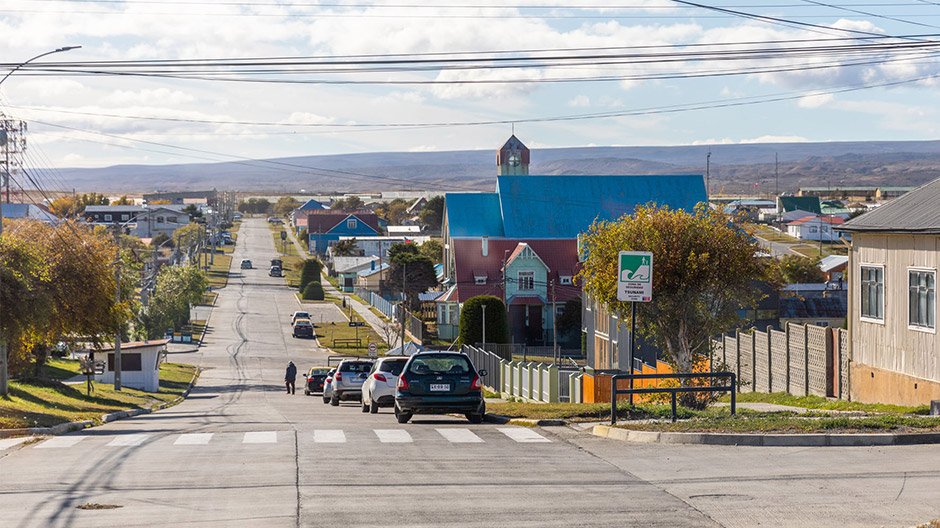
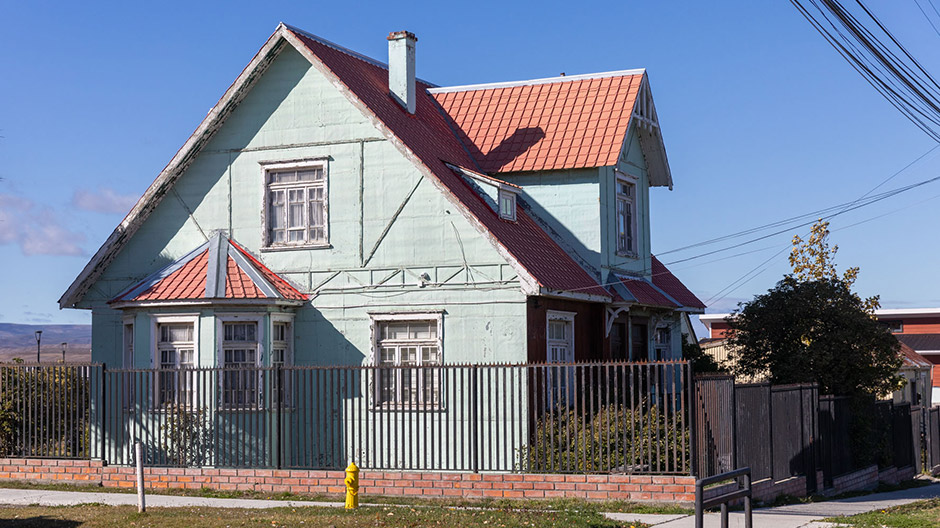
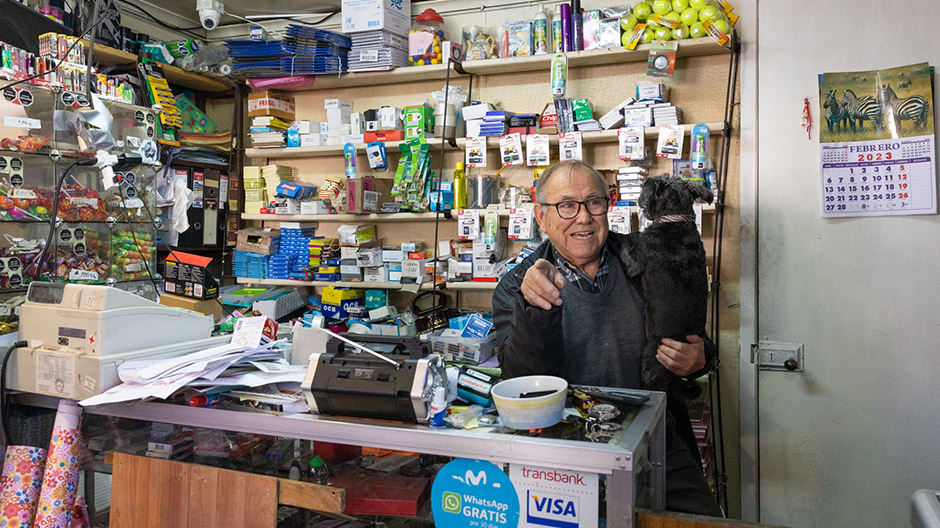
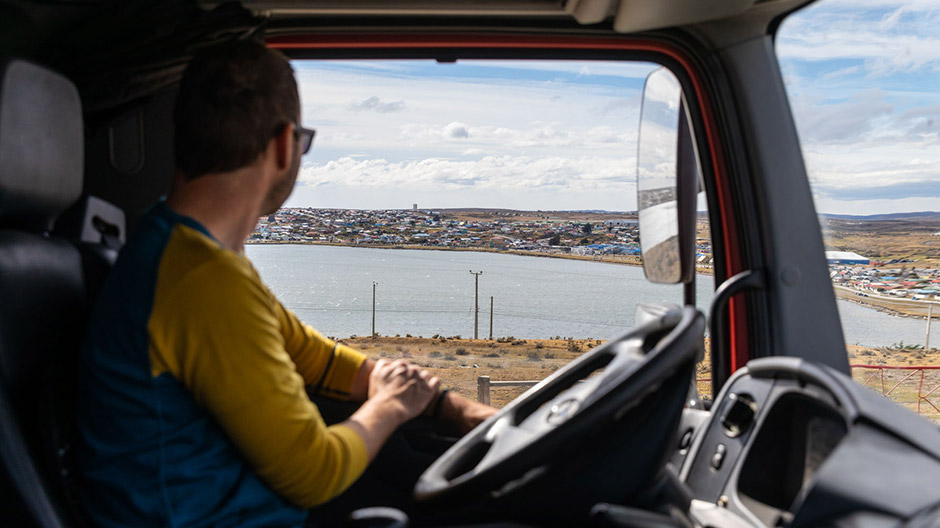
Across the Strait of Magellan by ferry.
A good hour later. We were waiting for the ferry that would take us across the Strait of Magellan – the legendary seafarer is credited with its discovery. It was only a short journey once we made it on board the vessel. Just 30 minutes later, we arrived at Tierra del Fuego. South America’s southern tip is so called because Magellan claimed to have seen countless fires sparked by the indigenous population here.
After having arrived at Isla Grande de Tierra del Fuego, instead of taking the direct route south, we took a smaller road that runs along the Strait of Magellan. Or rather: we drove along a gravel track next to the road that is currently being expanded. Consequently, we reduced the tyre inflation pressure again to make the ride much more comfortable. After a while, we came across a bright orange Arocs with a tipper body.
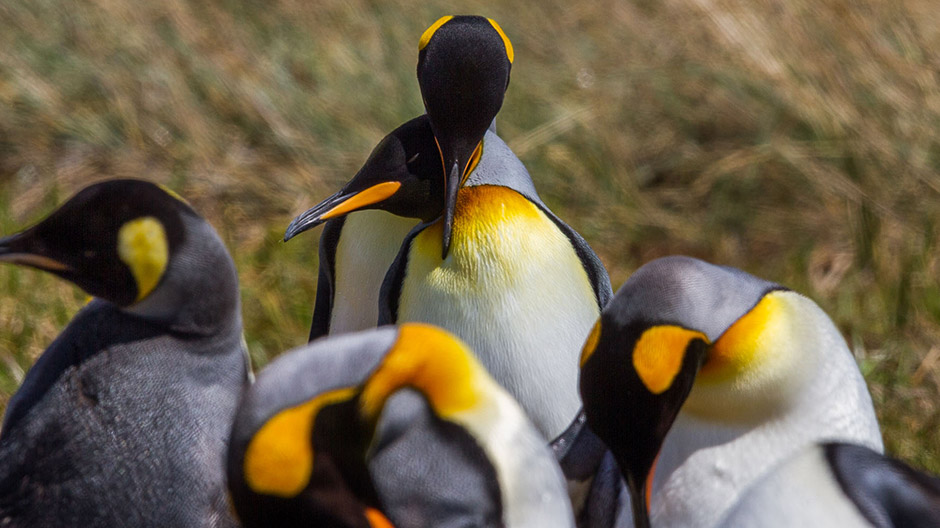
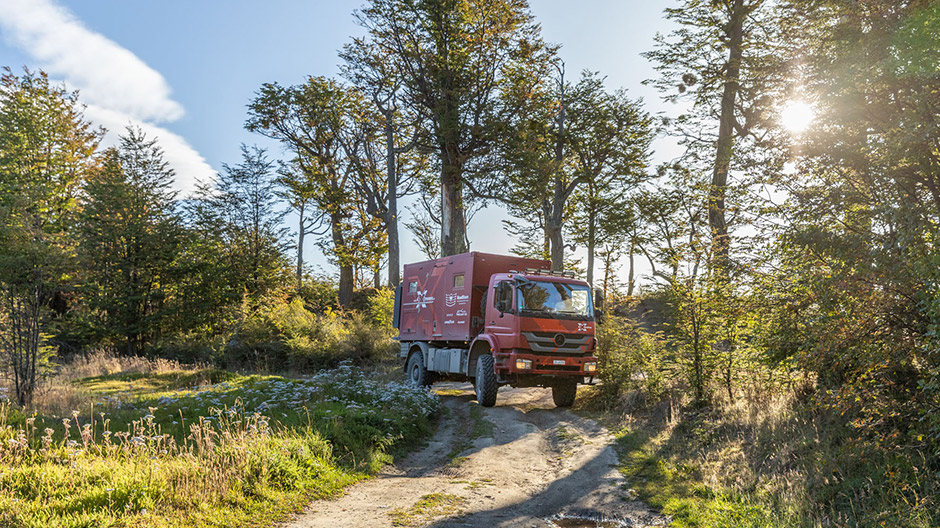
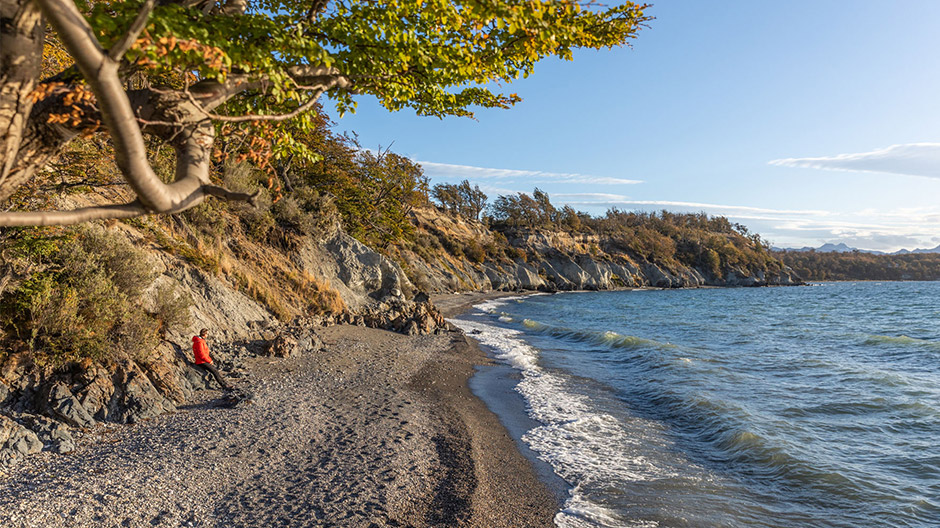
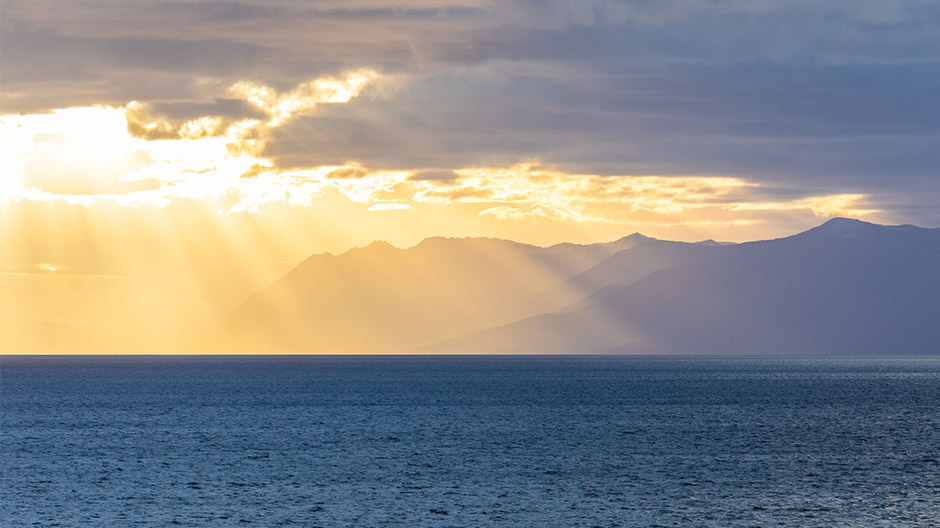
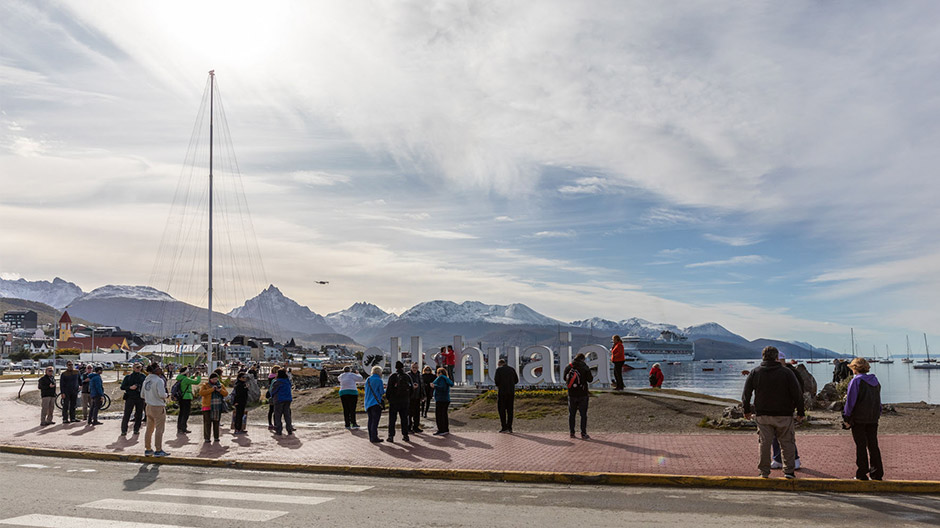
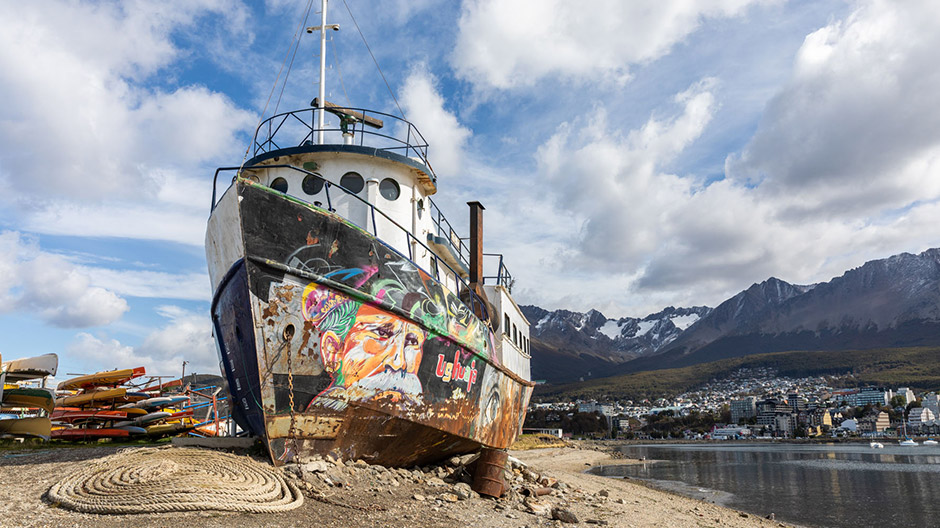
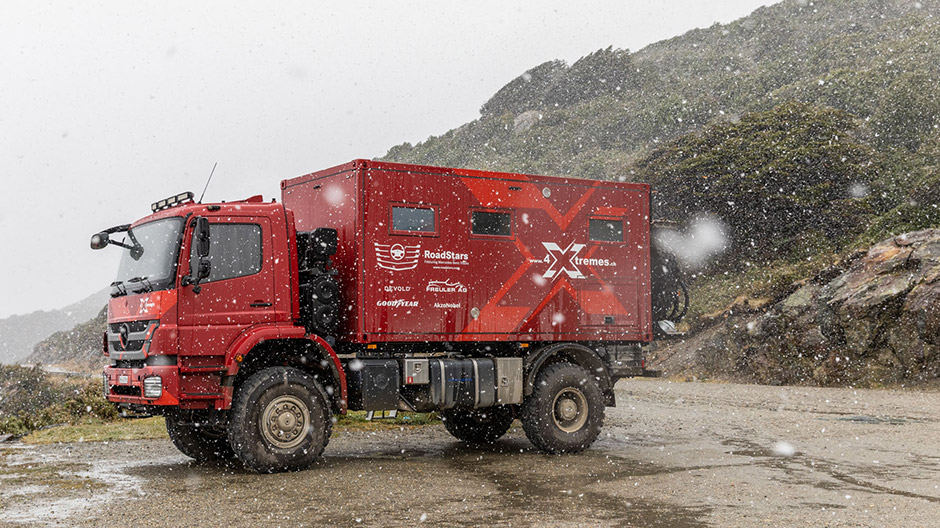
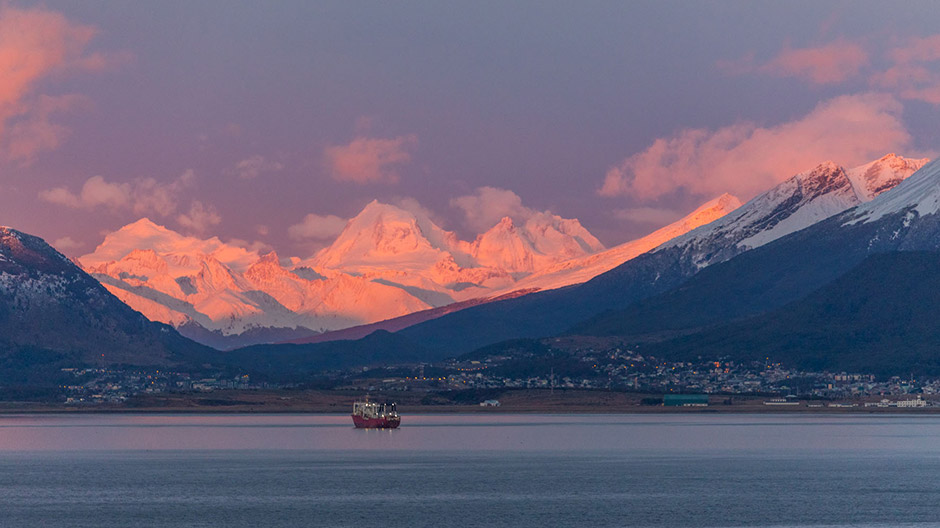
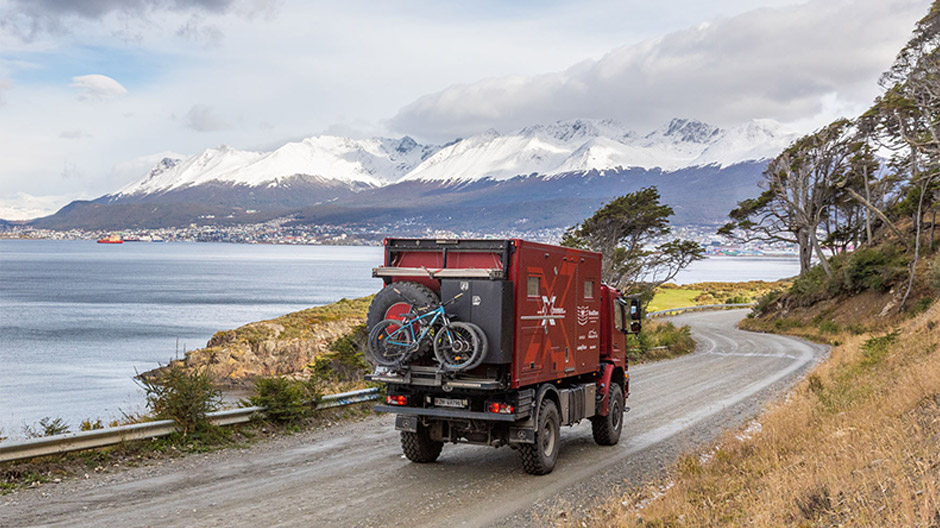
Beaver plague and cash.
Because we don't like driving in the dark, we spent a night on the roadside. As soon as construction site traffic stopped in the evening, we spotted a family of beavers. As cute as these little critters are, they are a plague on Tierra del Fuego. The beaver was introduced in the 1940s by fur traders from North America. As it has no natural enemy in South America, its population increases unabated, gnawing down trees in the process. With huge consequences for the entire ecosystem.
The next day we reached Porvenir. In this charming town with a population of 7,000, we withdrew Chilean cash and bought a SIM card and some fresh food in small shops. Locals are really nice and happy to be in contact with travellers. A good bit further on we witnessed the only colony of king penguins outside the sub-Antarctic islands.
Finally forest again!
The border between Chile and Argentina runs like a line in a north-south direction across the large island of Tierra del Fuego. We crossed it and reached the Atlantic coast after a few kilometres. The landscape changes south of the coastal city of Rio Grande. After weeks spent in semi-deserts and steppes, we once again came across some trees and rivers.
We took a break at Fagnano, the largest lake in Tierra del Fuego. The lush green of the beech forest and the colour of the water in which it reflects are a pleasure to the eye.
A few days later, the time had finally come: We reached Ushuaia. The city with a population over 100,000 extends from the foot of a mountain range at Canal Beagle. At this point, a cruise ship was moored in the harbour and its passengers were flooding the city. We queued up to take a picture of the "end of the world" sign. Once that was done, we drove to a lookout point with an unobstructed view of the city to spend the night. Above all, however: we got the opportunity to watch whales through the window of our living quarters. A real premier seat.
The end is not the end.
The weather here is a mixed bag. With the sun shining, we drove through the "city gate" of Ushuaia, strolling along the shore in the finest weather. The next morning we got caught up in severe snow showers. It wasn't cold enough to settle, but seeing the snow was still beautiful. We spent a cosy winter's day and experienced a spectacular sunrise the next morning.
Ushuaia may be the end of the world, but it is not the end of our journey. From now on, there is one direction above all for us: north.
4-Xtremes – The World Tour.
An unparalleled journey.
Andrea and Mike Kammermann have been on tour in their Axor for three years. "4-Xtremes – The World Tour" is the motto of the journey that the two Swiss nationals embarked on in mid-2020 and which they share with the RoadStars community. Keep up to date and don't miss out on any of the stunning destinations visited by the adventurous pair.
You can find the current parts from the “4-Xtremes – The World Tour” series here.
You can find the route of the trip before the crossing to South America here.
Photos: 4-Xtremes




Comment
Please log in to post a comment.
12 comments
Schön wenn man so einen einzigartigen Traum real umsetzen u. (er)leben kann.
Weiterhin alles gute u. sichere Reise gen Norden.
Schön wenn man so einen einzigartigen Traum real umsetzen u. (er)leben kann.
Weiterhin alles gute u. sichere Reise gen Norden.
Ein Genuß dem Bericht auf der "Landkarte" zu folgen und eindrucksvolle Bilder auf sich wirken lassen.
Das Sonnenaufgangsbild spricht mich ganz besonders an.
Vielen Dank!
Ein Genuß dem Bericht auf der "Landkarte" zu folgen und eindrucksvolle Bilder auf sich wirken lassen.
Das Sonnenaufgangsbild spricht mich ganz besonders an.
Vielen Dank!
Liebe Grüsse aus Südamerika :)
Liebe Grüsse aus Südamerika :)
Bald kommt mehr von unserem Weg in Richtung Norden, bis bald :)
Bald kommt mehr von unserem Weg in Richtung Norden, bis bald :)
Liebe Grüsse von uns
Liebe Grüsse von uns
Danke für Eure tollen Storys, super Bilder und Ihr habt mich geistig immer mitgenommen auf Eurer Tour.
Bitte macht weiter so!!!!
👍👍👍👌🚚😎😍
Danke für Eure tollen Storys, super Bilder und Ihr habt mich geistig immer mitgenommen auf Eurer Tour.
Bitte macht weiter so!!!!
👍👍👍👌🚚😎😍